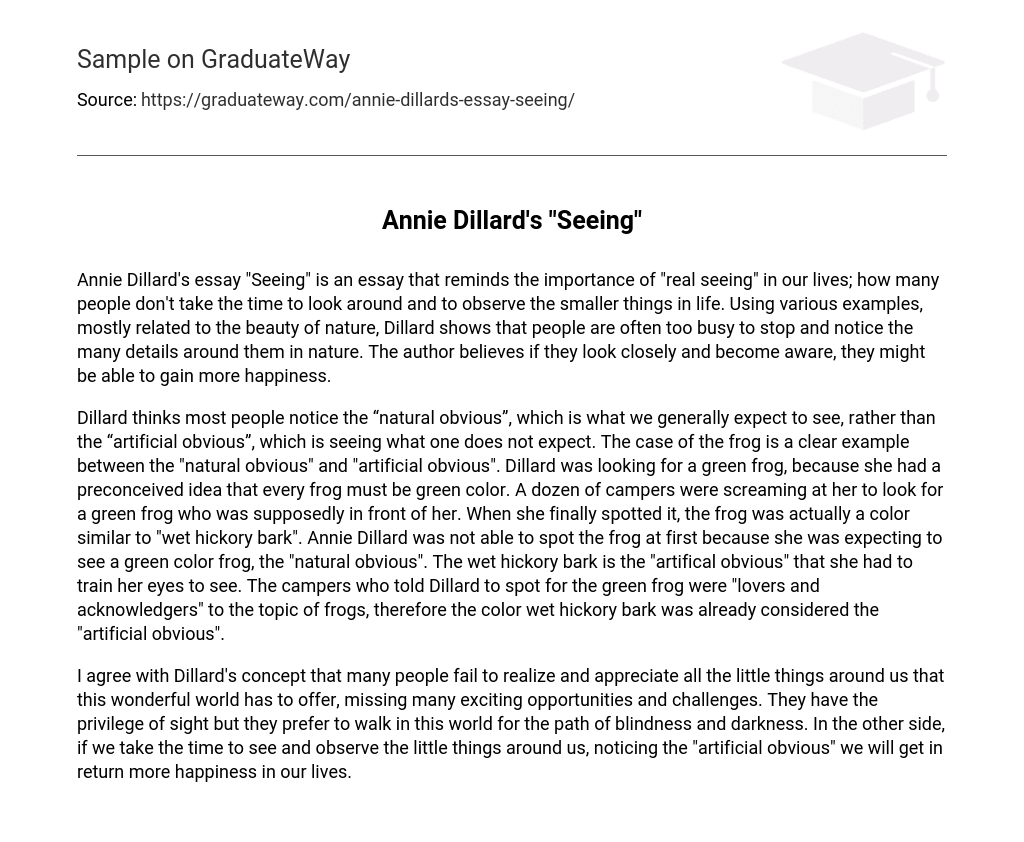Annie Dillard’s essay “Seeing” is an essay that reminds the importance of “real seeing” in our lives; how many people don’t take the time to look around and to observe the smaller things in life. Using various examples, mostly related to the beauty of nature, Dillard shows that people are often too busy to stop and notice the many details around them in nature. The author believes if they look closely and become aware, they might be able to gain more happiness.
Dillard thinks most people notice the “natural obvious”, which is what we generally expect to see, rather than the “artificial obvious”, which is seeing what one does not expect. The case of the frog is a clear example between the “natural obvious” and “artificial obvious”. Dillard was looking for a green frog, because she had a preconceived idea that every frog must be green color. A dozen of campers were screaming at her to look for a green frog who was supposedly in front of her. When she finally spotted it, the frog was actually a color similar to “wet hickory bark”. Annie Dillard was not able to spot the frog at first because she was expecting to see a green color frog, the “natural obvious”. The wet hickory bark is the “artifical obvious” that she had to train her eyes to see. The campers who told Dillard to spot for the green frog were “lovers and acknowledgers” to the topic of frogs, therefore the color wet hickory bark was already considered the “artificial obvious”.
I agree with Dillard’s concept that many people fail to realize and appreciate all the little things around us that this wonderful world has to offer, missing many exciting opportunities and challenges. They have the privilege of sight but they prefer to walk in this world for the path of blindness and darkness. In the other side, if we take the time to see and observe the little things around us, noticing the “artificial obvious” we will get in return more happiness in our lives.





